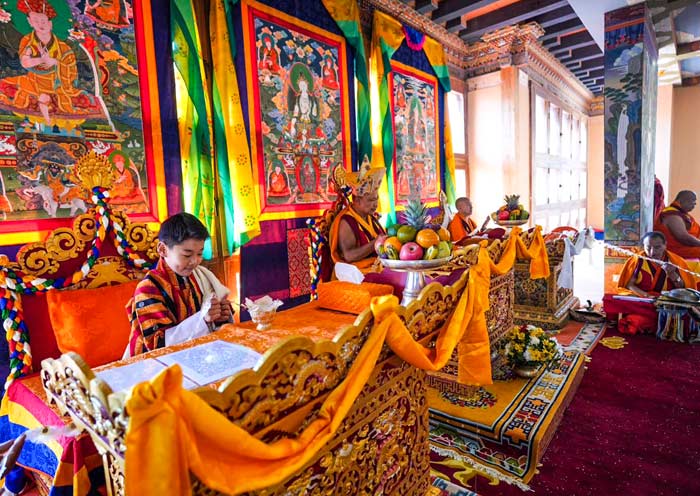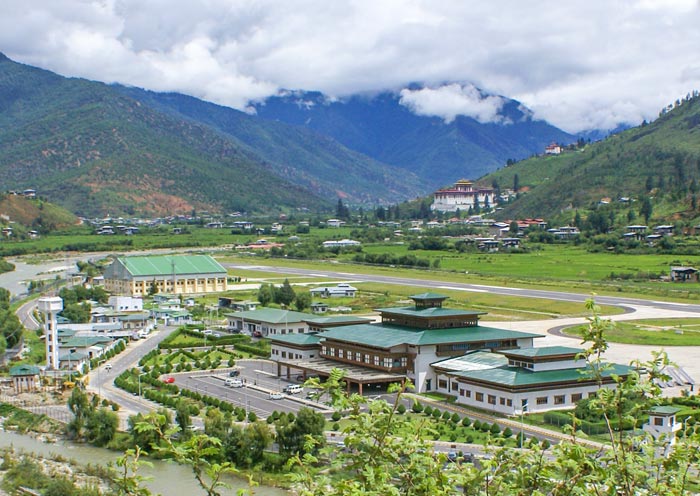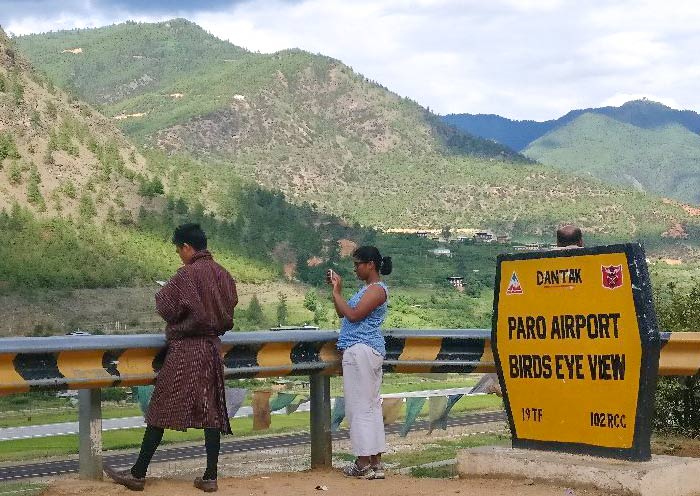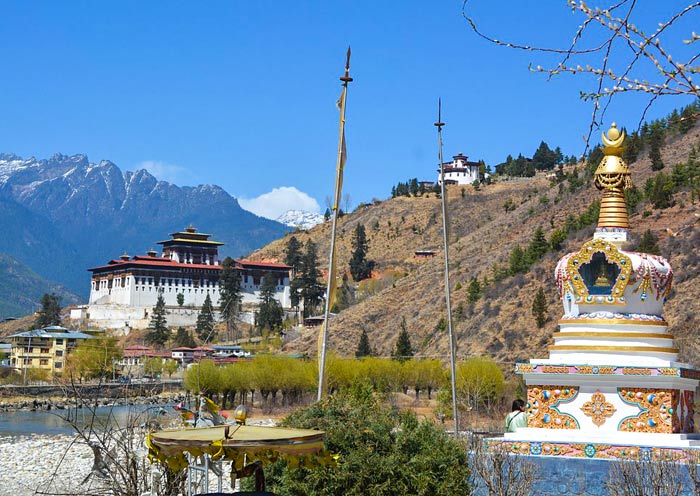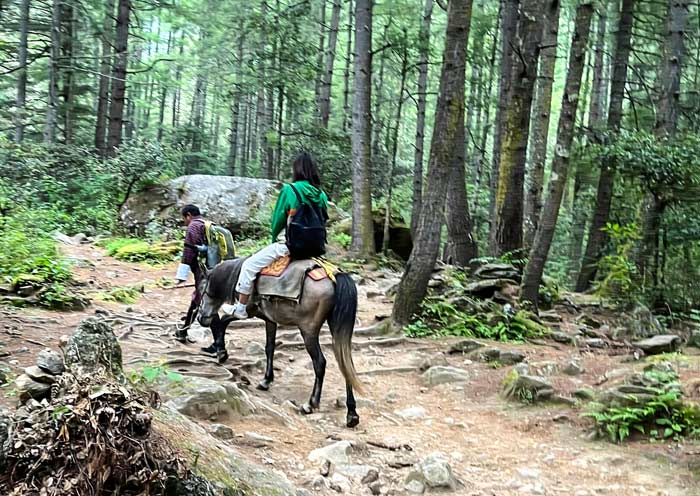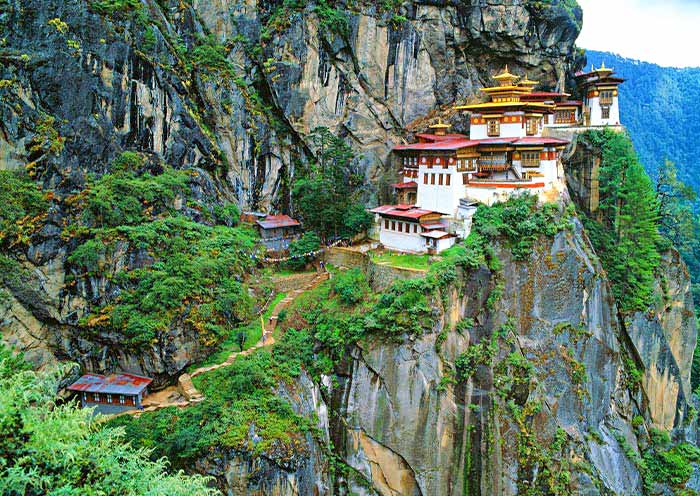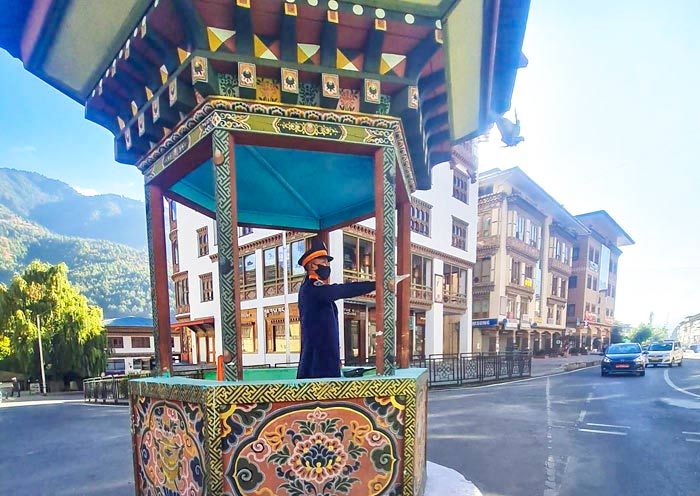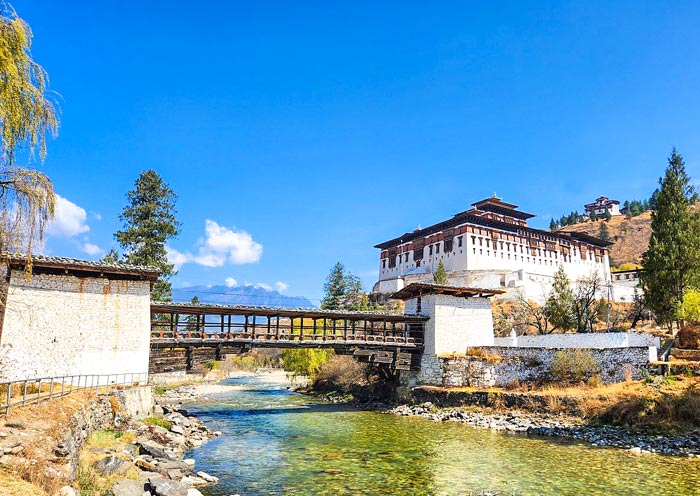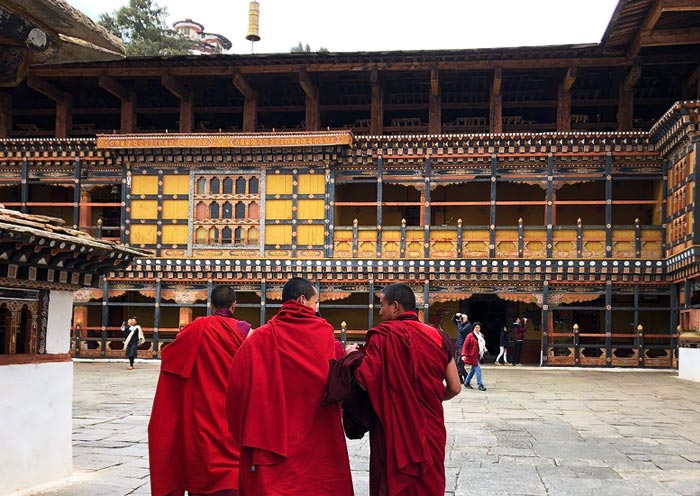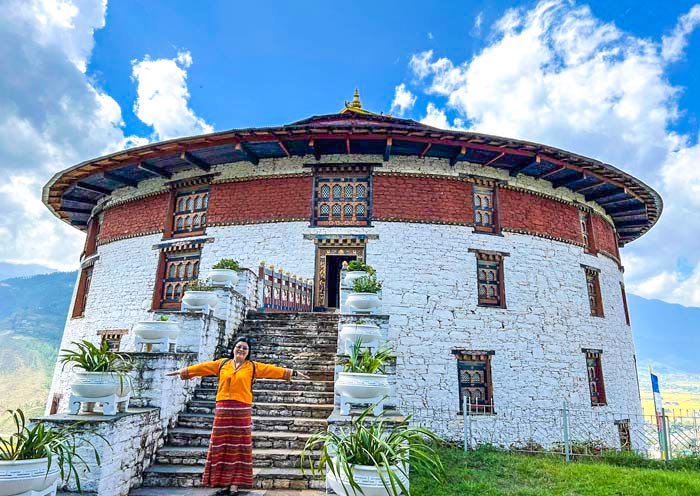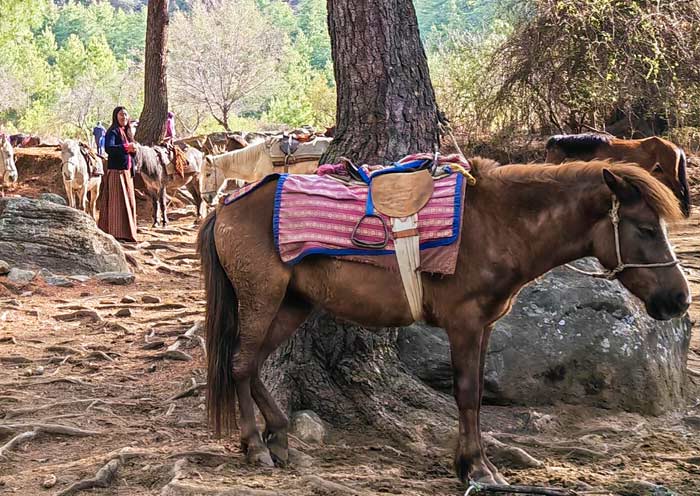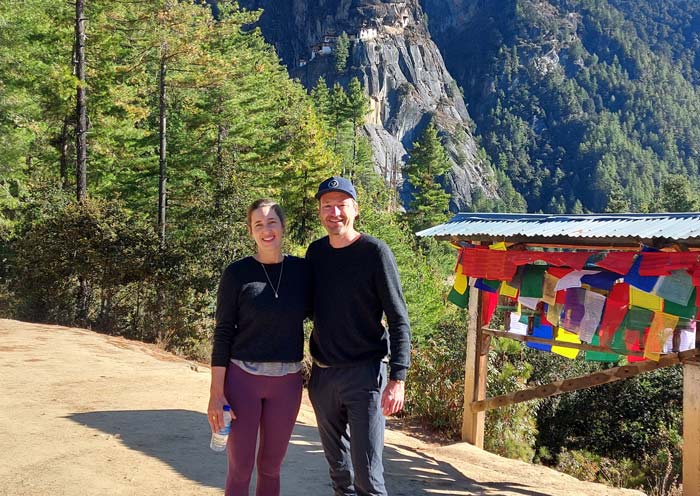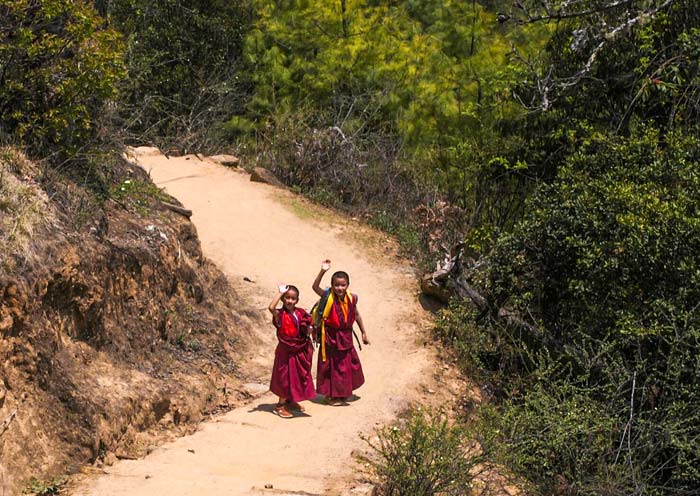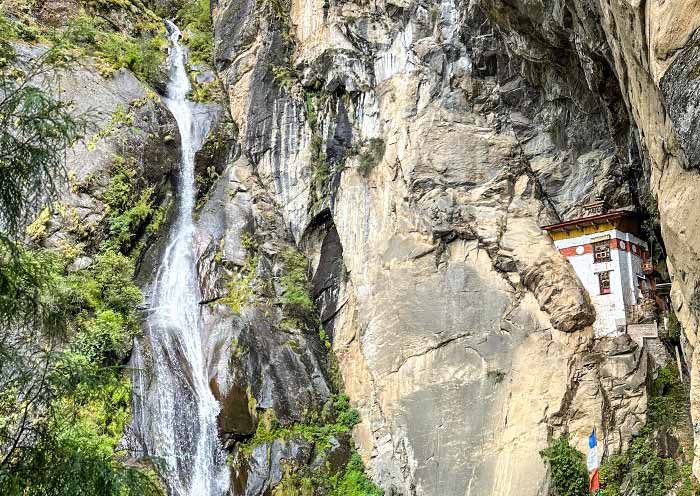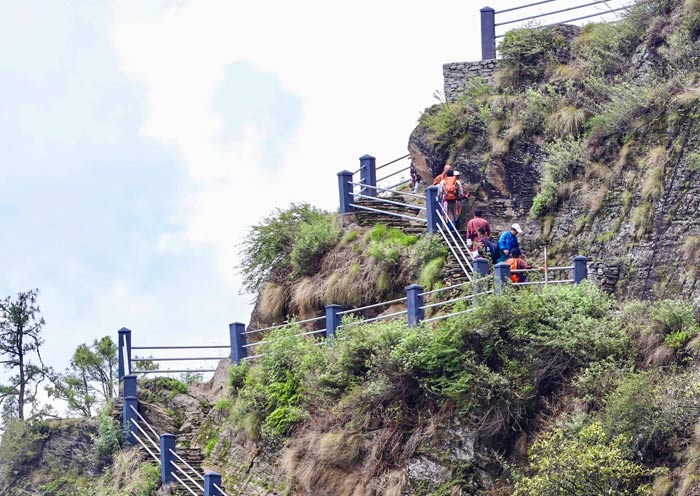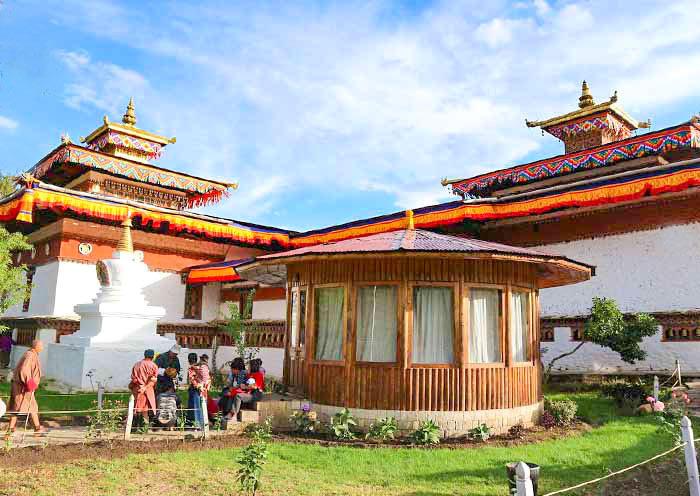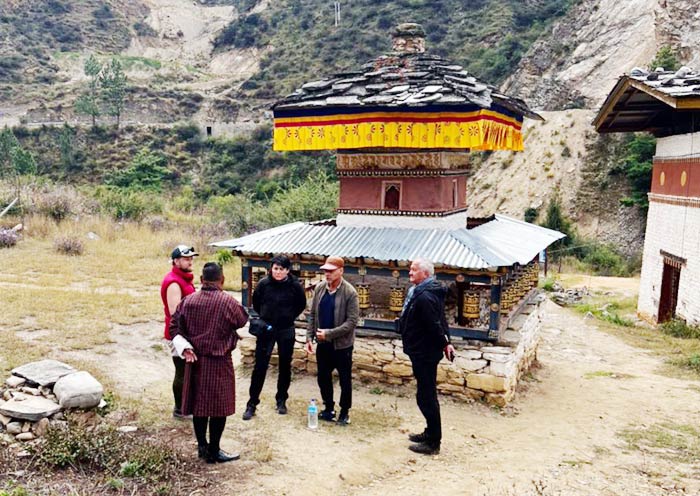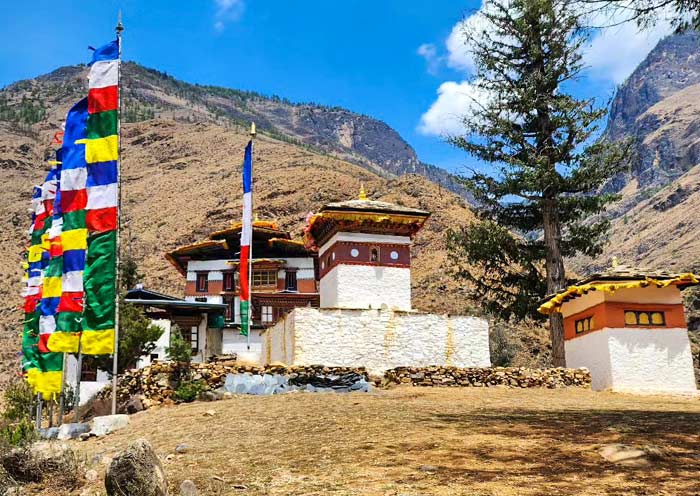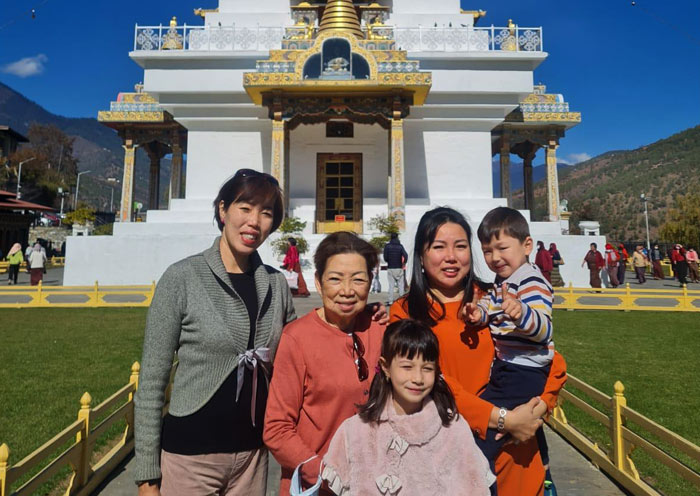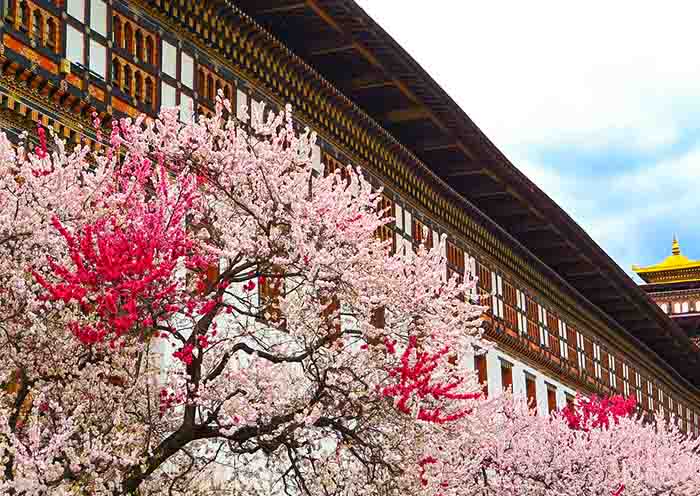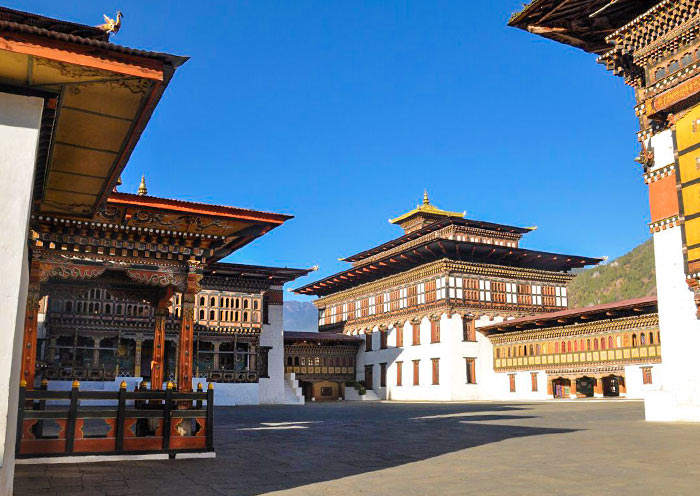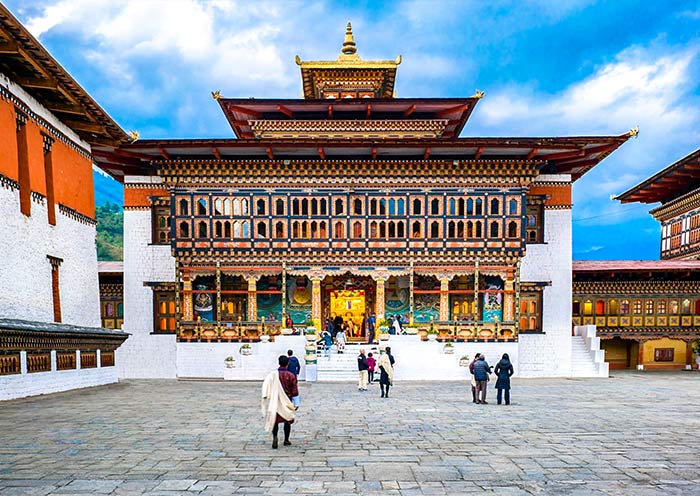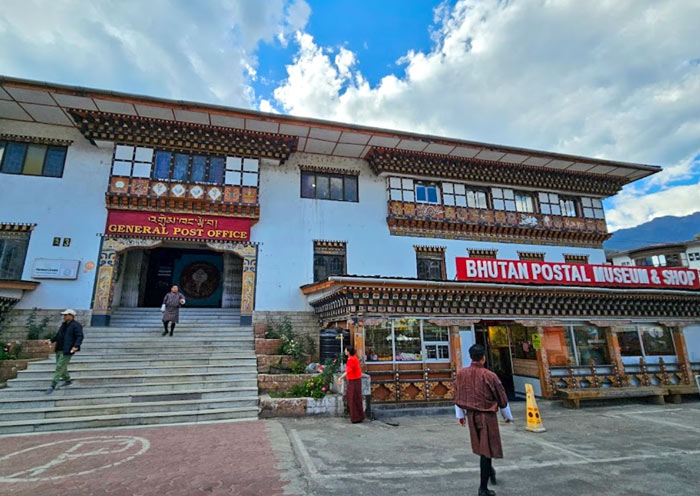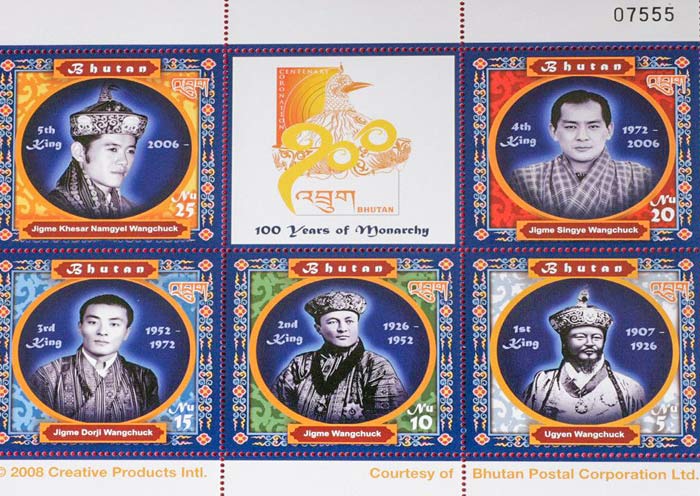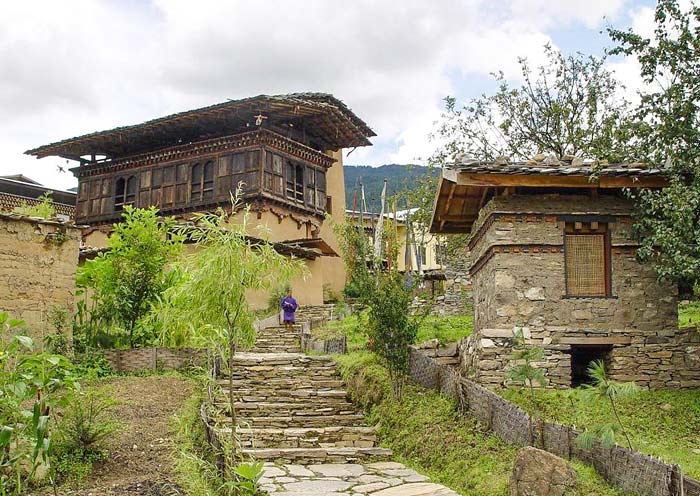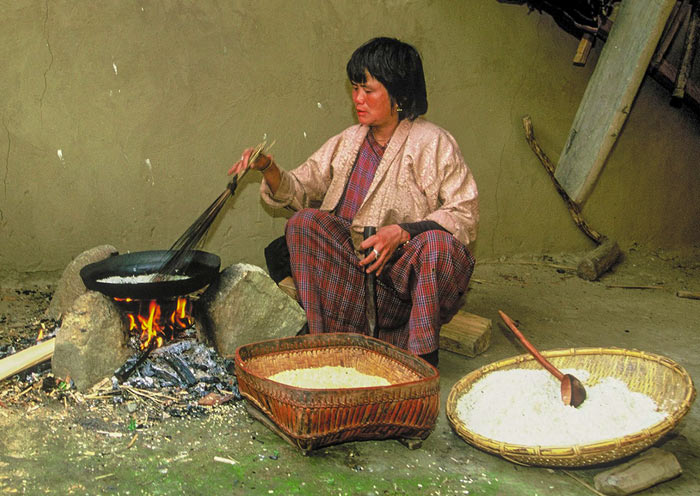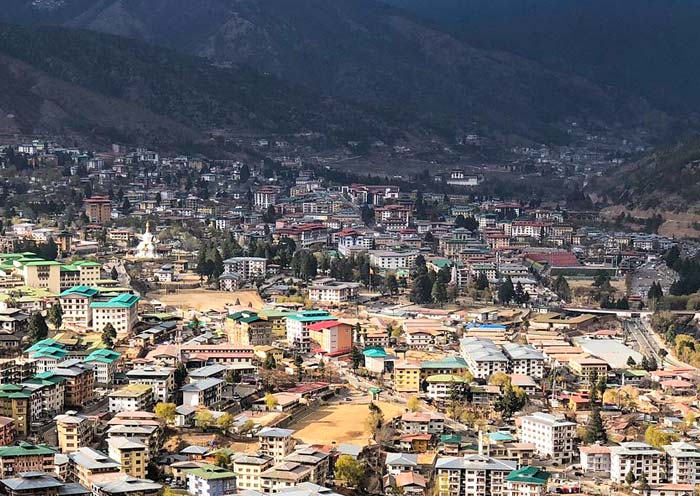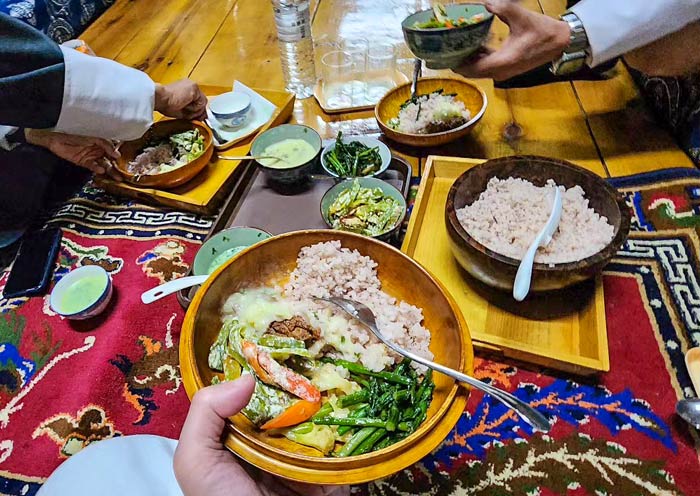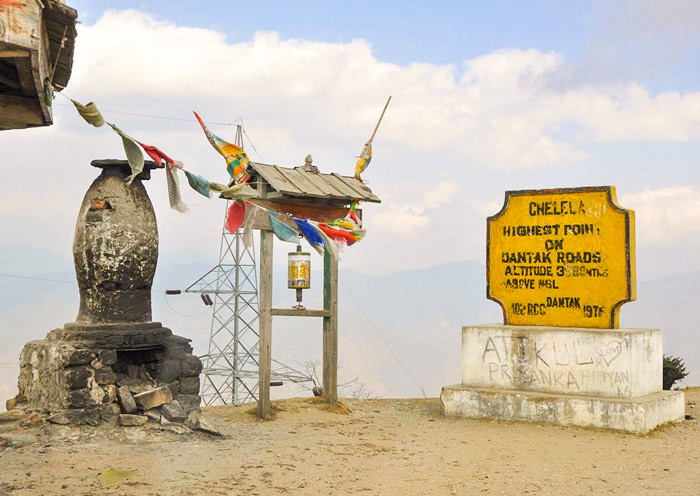Today, we will head to Thimphu, the capital city of Bhutan, which is approximately 50km away and takes about 1.5 hours to reach. On the way, we will make a stop at Tamchog Lhakhang for a visit. Once in Thimphu (altitude 2,340m), you will have a full day of sightseeing. You can explore its rich cultural heritage such as the Buddha Dordenma Statue, National Memorial Chorten, and Tashichho Dzong. Nature lovers will love to visit the Motithang Takin Preserve to see Bhutan's national animal. Additionally, you have the opportunity to learn more about Bhutanese culture by having dinner at the Folk Heritage Museum (available for groups of over 5 people).
From Paro to Thimphu, you won't want to miss visiting the famous Tamchog Lhakhang Iron Bridge (view Tachog Lhakhang from outside only), situated by the Paro river. There, you will have the opportunity to walk across a unique iron chain bridge adorned with colorful fluttering prayer flags. Both the Lhakhang and the iron bridge were constructed by the revered saint Thangthong Gyalpo (1385 - 1464), who was renowned as the Iron Bridge Maker. Take delight in exploring his historic architectural creations that have stood the test of time. Then, you will visit the iconic landmark of Thimphu city - the Buddha Dordenma Statue (Buddha Point), which is the largest sitting Shakyamuni statue in the world. Completed in 2015, the statue embodies an ancient prophecy of radiating happiness and peace throughout the world. In addition to admiring its impressive height of 51.5 meters, constructed of bronze and gilded in gold, you will also be able to see 125,000 smaller Buddha statues placed within it. Moreover, from this vantage point, you can enjoy a magnificent view of the Thimphu Valley.
As the largest city in Bhutan, Thimphu lacks traffic lights and a railway system. When you enter the city, you can visit the National Memorial Chorten and experience it as the locals do. It is customary to follow the footsteps of the Bhutanese people and perform a clockwise kora (circumambulation) around the Chorten while offering prayers. This will provide you with numerous opportunities to engage with the locals and learn about their daily lives, as well as their philosophy on happiness.
The National Memorial Chorten is the most visited landmark in Thimphu. Constructed in 1974 in memory of the Third King, His Majesty Jigme Dorji Wangchuk (known as the Father of Modern Bhutan), by his mother, it reflects the late king's vision of promoting world peace and prosperity. The Chorten follows a Tibetan-style architecture and is adorned with remarkable paintings and intricate sculptures. You can observe the traditional stupa design, featuring a pyramidal pillar topped with a crescent moon and sun. If time permits and you have an interest in Bhutan's national animal, you can visit the Motithang Takin Preserve. There, you can observe the unique creature that is said to have been created by the legendary Drukpa Kunley (Divine Madman). According to legend, Drukpa Kunley fashioned the takin with the head of a goat and the body of a cow.
Sure, you should not miss the visit to Tashichho Dzong (Thimphu Dzong), which has served as the seat of the government since 1952. This magnificent fortress-like structure is located on the western bank of the Wang Chu River. It seamlessly integrates with the entire valley and stands as the ultimate center of power in Bhutan. It houses the offices of the current reigning monarch, the Fifth King (Jigme Khesar Namgyel Wangchuck), as well as the ministries of internal affairs and finance. Additionally, it serves as the residence of the spiritual leader of Bhutan, the Je Khenpo, and hosts the central religious institutions of the country. During the summer season, the Je Khenpo resides in the Thimphu Dzong, while in the winter season, they relocate to Punakha Dzong. Walking around the Dzong, you will discover that it is an impressively large structure surrounded by well-kept lawns and beautiful gardens. Tashichho Dzong has two main entrances. One entrance leads to the administrative section in the south, while the other, situated in the north, grants access to the monastic quarter where the Thimphu Tshechu Festival and masked dances are performed.
Note: The tourist opening hours of Thimphu Dzong are from 5 PM to 6:30PM on weekdays and from 10 AM to 4 PM on weekends. It is required to have a tour guide accompany you for a visit to the Dzongs. Before entering for a visit, security checks are conducted.
Finally, it's time for dinner. You can enjoy a traditional meal at the Folk Heritage Museum Restaurant. It was established by Her Majesty Ashi Dorji Wangmo Wangchuck, the Queen Mother of Bhutan (Mother of the 5th King). After dinner, you will spend the night in Thimphu and have a restful sleep.
Optional Bhutan Thimphu Experiences:
1. Fully functional stamp printed with a self-portrait (Bhutan Post Office: Weekdays: 9AM - 5PM; Saturdays: 9 AM - 1 PM; Closed on Sundays)
2. Cooking class in Thimphu (1hour).





